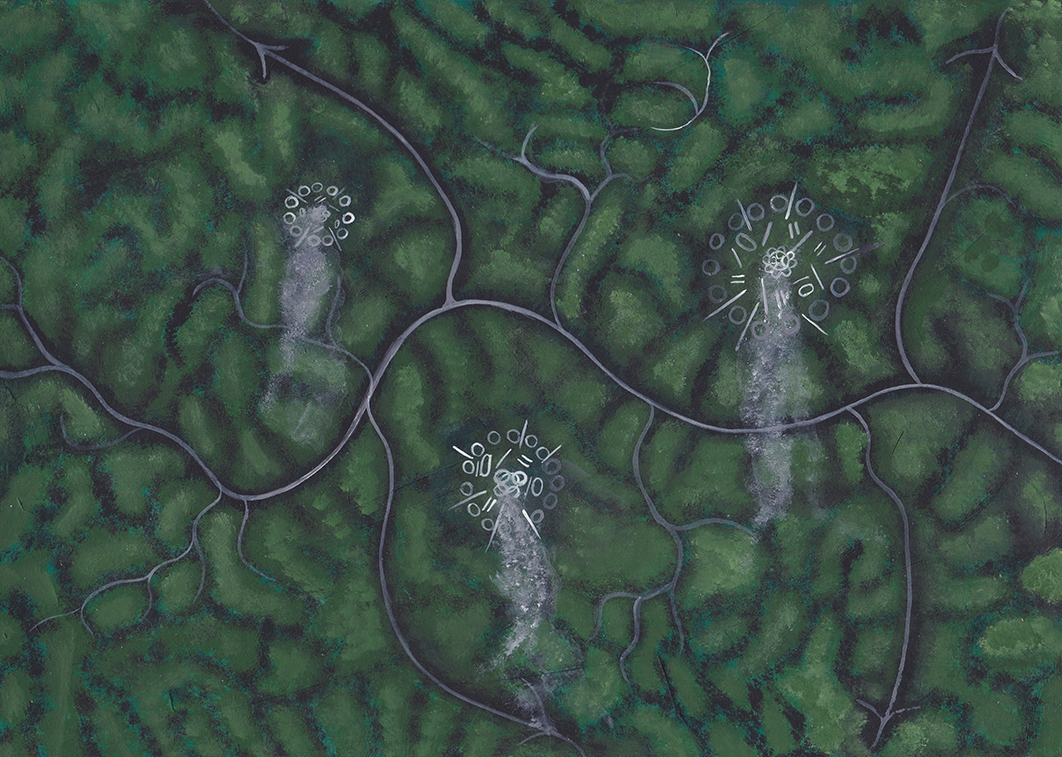
It’s time to start Caring for Country
If we care for Country, it will care for us. Kicking off in 2008, Envirobank is the brainchild of Indigenous woman Narelle Anderson. With almost three decades of experience in the recycling and waste industry, Narelle began her journey as a young Indigenous entrepreneur. Being an Indigenous-owned business, Envirobank is dedicated to incentivising Aussies to care for Country.
“Our charter from inception has always been caring for Country. That is who we are. If we are getting these plastic bottles and cans out of our rainforests, national parks and waterways – we are working to heal Country at the same time.” – Narelle Anderson


Why does caring for Country mean so much?
Rather than viewing land as property for the benefit of humans only, the Indigenous approach that “if we care for Country, it will care for us”, puts our relationship to land as part of complex and lively landscapes, of ancestral energies and more-than-human perspectives.
For Aboriginal and Torres Strait Islander people, “Country” is more than a place – it is a sense of belonging that is inherent to First Nations identity. The term “caring for Country” reflects a profound spiritual connection to land. Aboriginal law and spirituality are intertwined with the land, the people and creation.
Deep time.
There is something exciting about the idea that we are living on a land where the energies of ancestors continue to energise the spirits of everyday places, bringing to life all matter – both seen and unseen – transporting us beyond our modern world and reinforcing ecological responsibilities to care for land, sea and sky.
Aunty Rhonda Radley, a Gathan language teacher and Birpai Elder:
“When we listen to Country, we learn that time isn’t linear. We can connect to people across many different times, around the idea of place, and of Country.”
“You all have come here, to this Country to see, to listen, and remember.” Nyura yin-gu mara-la barray-gu, nyaa-gi, ngarra-gi.
Around Australia, Indigenous languages vary in both the number of season words and their exact meaning. This is because all around Australia, very different kinds of weather is experienced around the year in different parts of the Country.
Seeing and listening.
Australia’s climate is diverse. Monsoon tropics, desert, savannah, alpine and temperate regions can all be found in various locations. Indigenous seasonal descriptions are far, far more intricate and detailed than the four seasons (Summer, Autumn, Winter, Spring), with natural differences across the land. They use the reaction of plants and animals to understand what is happening in the environment.
Let’s start with what’s happening now!
FEBRUARY –
Banbai nation – wildfire time.
Banbai Nation of the Northern Tablelands are the traditional owners of Wattleridge, the first first Indigenous Protected Area to be declared in New South Wales.

Wildfire time (November – March): wet and hot becoming warm.
BEAMBYU = EAT, PHATAE = FOOD
Blackthorn, ladies’ tresses and greenhood orchids are flowering. Native bush rat juveniles are active. Wombat berries are eaten; the roots are sweet tasting when raw; this plant is also used for medicine. Some bush tomato (Solanum) fruits are eaten but some species are poisonous – the local solanum fruits are probably poisonous.

D’harawal Country – time of Burran: Gadalung Marool.
D’harawal Country’s traditional lands encompass the south of Sydney Harbour, through Georges River, Botany Bay, Port Hacking and south beyond the Shoalhaven River to the Beecroft Peninsula. Their inland extent reaches Campbelltown and Camden.

Time of Burran – Gadalung Marool (hot and dry, January to March): Male kangaroos are aggressive, meat is forbidden and Weertjellan blooming.
The behaviour of the male kangaroos becomes quite aggressive in this season, and it is a sign that the eating of meat is forbidden during this time. This is a health factor; because of the heat of the day meat does not keep, and the likelihood of food poisoning is apparent.
The blooming of the Weetjellan (Acacia implexa) is an important sign that fires must not be lit unless they are well away from bushland and on sand only, and that there will be violent storms and heavy rain, so camping near creeks and rivers is not recommended.

Nyoongar Country – time of Bunuru.
Nyoongar people are the traditional owners of the south-west of Western Australia and have been for over 45,000 years. Different Noongar groups have custodial status over certain parts of the south-west. Within these areas are moort boodja or family runs.

Bunuru – second summer (February – March): coast living, fishing time, season of adolescence and the hottest part of the year.
Bunuru is the hottest time of the year with little to no rain. Hot easterly winds continue with a cooling sea breeze most afternoons if you’re close to the coast. Therefore, traditionally this was, and still is, a great time for living and fishing by the coast, rivers and estuaries. Because of this, freshwater foods and seafood made up major parts of the diet during this time of year.
Bunuru is also a time of the white flowers with lots of white flowering gums in full bloom, including Jarrah, Marri and Ghost Gums.
Another striking flower that is hard to go past is the female Zamia (Macrozamia riedlei). Being much larger than that of its male counterpart, the huge cones emerge from the centre of the plant with masses of a cotton wool-like substance.
As the hot, dry weather continues the seed upon the cones change from green to bright red, indicating they’re ripening and becoming more attractive to animals, particularly the emu, that will eat the toxic fleshy outer.

Gariwerd region – time of Kooyang.
Aboriginal people have had an association with the Grampians for more than 30,000 years. Grampians National Park is part of the Gariwerd Aboriginal cultural landscape. Traditionally known as Gariwerd, the land is at the centre of creation stories for many of the Aboriginal communities in south-western Victoria.

Kooyang – season of eels, late summer (January – March): the hottest and driest time, scarce surface water, high bushfire risk and the night sky is bright with stars. Kooyang is depicted by eels, galaxia, baby animals, mistletoe as well as eeling and fishing.
Herbal medicines are available including old man weed for cold and chest complaints and tannins from gums and wattles for stomach complaints and burns.
Tree frogs can be heard squeaking, boxing kangaroos can be seen and snakes bask in the sun. Red wattlebirds flocking and fantails scurry down bush gullies, and young birds emerge during this season. The flowers of river red gums attract honeyeaters and galaxias (small native trout) move downstream to estuaries to spawn.

white plumes to a paintbrush. The most widely familiar honeyeater to any camper in Australia, especially along the inland stream lines dominated by River Red Gum Eucalyptus camaldulensis.
Maung Country – time of Walmatpalmat.
The Maung Country and language area are on the Goulburn Islands, off the north coast of Arnhem Land, in the Northern Territory.

Walmatpalmat – heavy rain (November – February): main wet season with northwest monsoons, kamarlkpakpa aparligaj ta walij (bushfire burning and new shoots of bush food).
Signs it is Walmatpalmat time include when the tamarind tree flowers, mango fruit become soft, wardwardang (wild apple fruits) and kurnpi (green plum fruit) are ripe, karwuluk (hairy yam) shoots and karnjawarra (crabs) moult. It’s also the best time for hunting wuta (mullet), marlajak (tiger prawns) and wirlmu (barramundi).


Walabunnba – time of Watangka.
Walabunnba is approximately 300km north of Alice Springs, part of the central desert of Australia. The birth place of the Ngapa (water) Rain Dreaming.

Watangka – hot season (October – March): High temperatures, bush fires, heavy rains.
Walabunnba is approximately 300km north of Alice Springs, part of the central desert of Australia. The birth place of the Ngapa (water) Rain Dreaming.
The lifestyle for the Walabunnba communities during Wangtanka:
“The hot weather (summer) called Wantangka gradually gets hotter so we know to be ready for high temperatures, bush fires and rains. A variety of different bush foods become available and certain animals are ready to eat.
The Bush Plum is found around Central Australia in the hot weather (summer). The Bush Plum is not a traditional Dreaming unlike Bush Banana or Bush Potato. We eat the plum straight off the bush when it is dark. It is sweet to taste.
The grass is burnt after the rains which is the end of the hot weather. The burning helps the bush foods to grow again.”
Lana, Rachel, Pansy, Trisha and Lindy, family members of the Walya Altjerre Aboriginal Corporation sharing cultural knowledge.

Indigenous weather knowledge source credit: Indigenous Weather Knowledge, Bureau of Meteorology.





